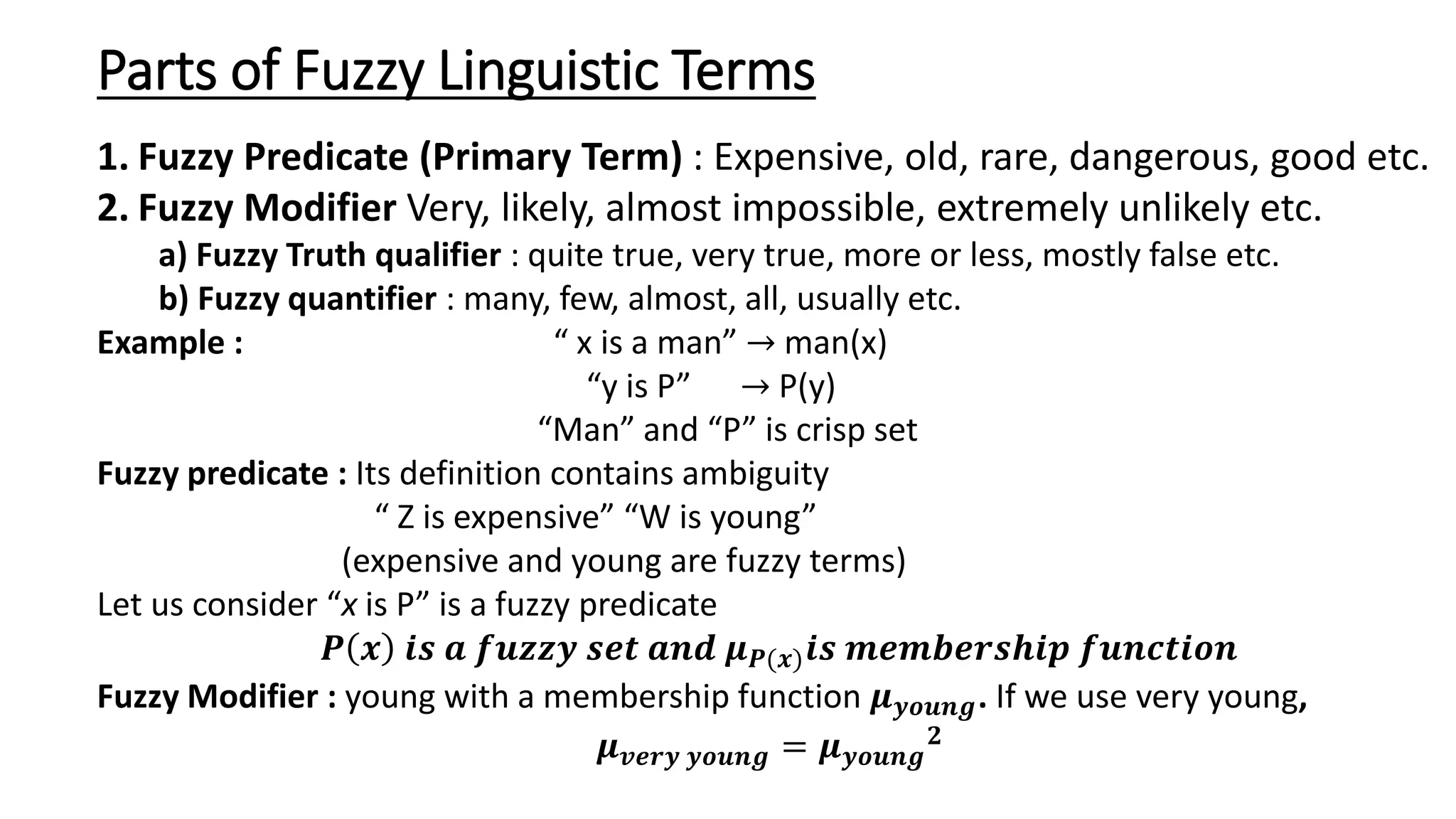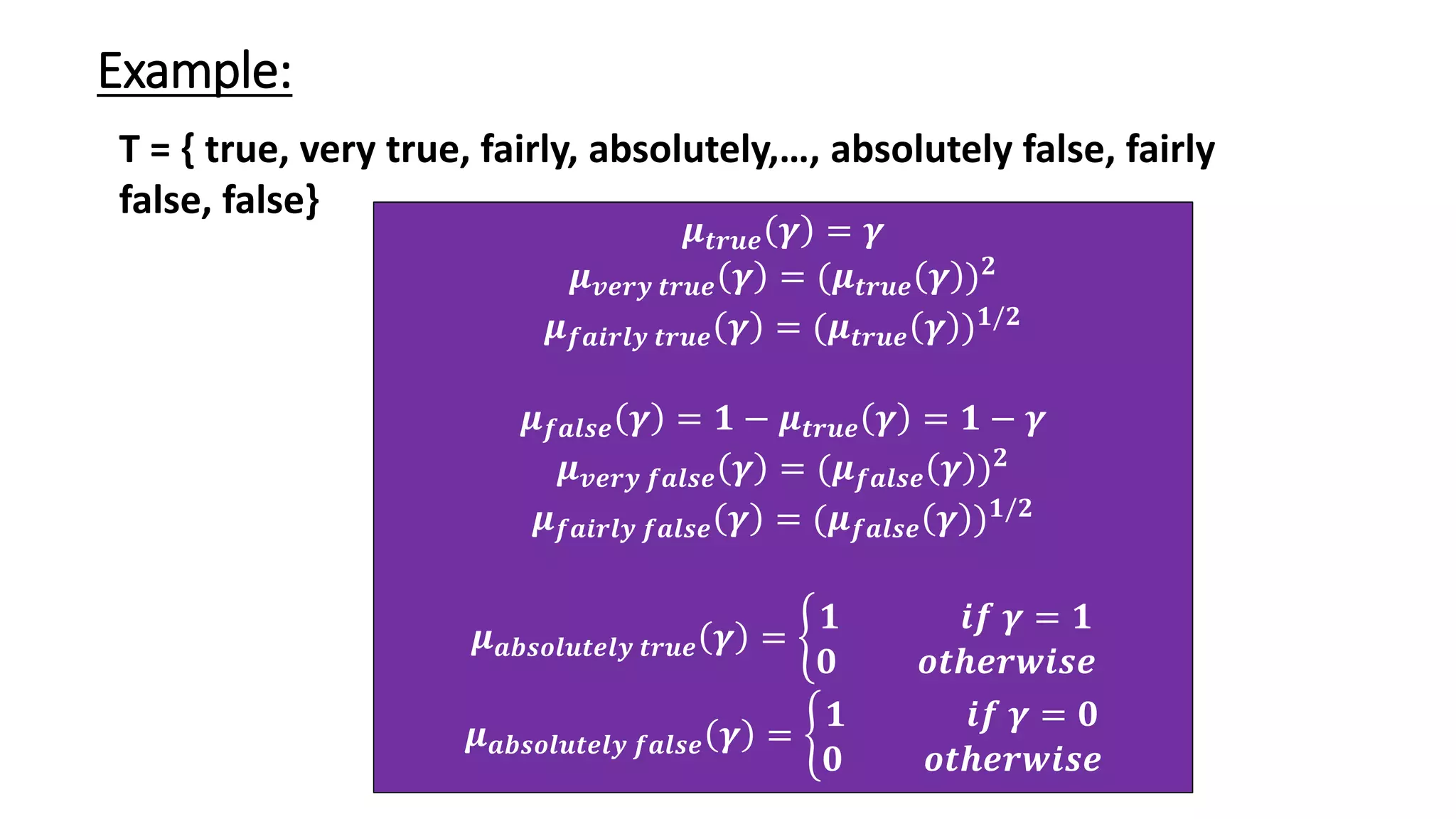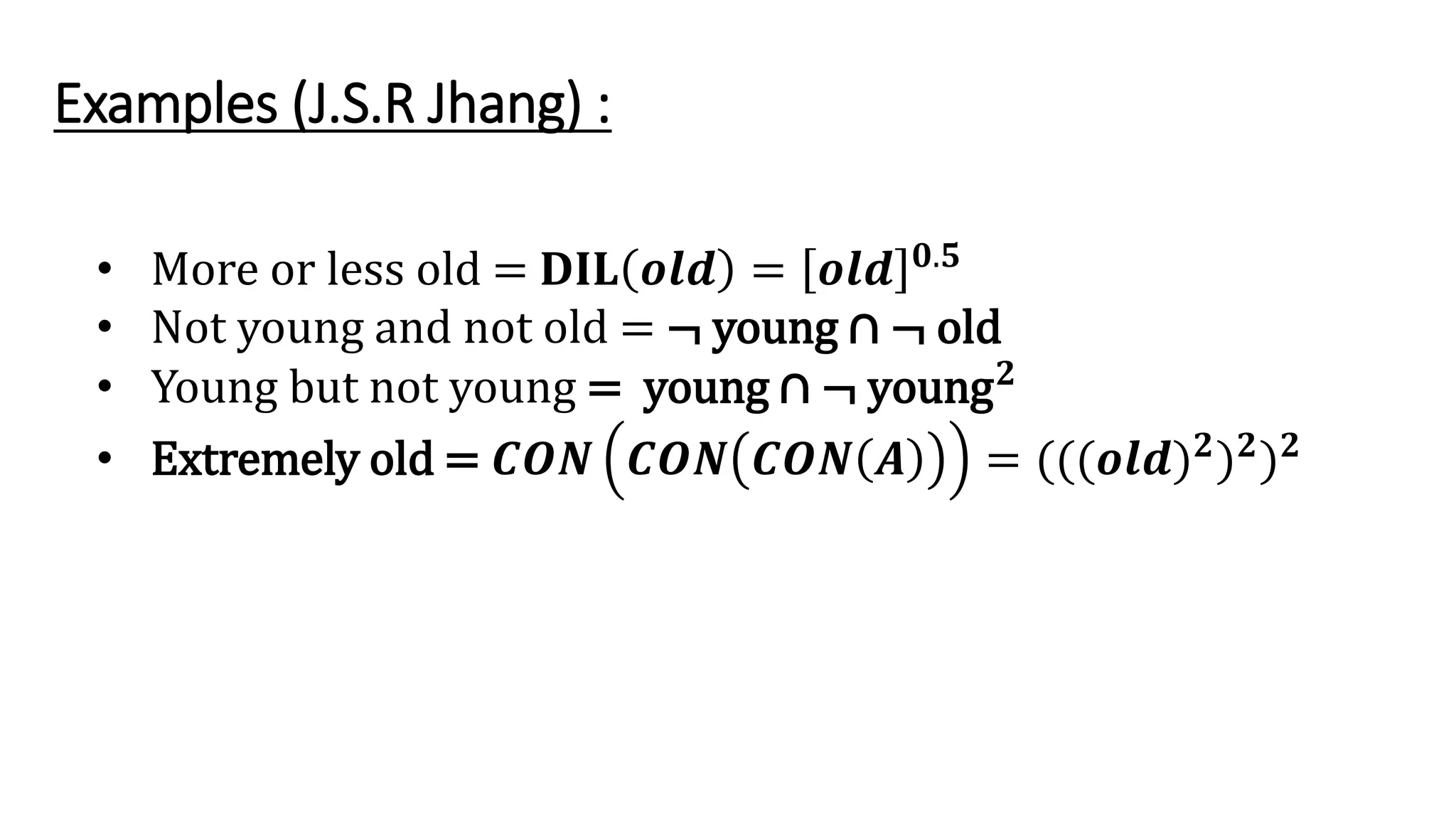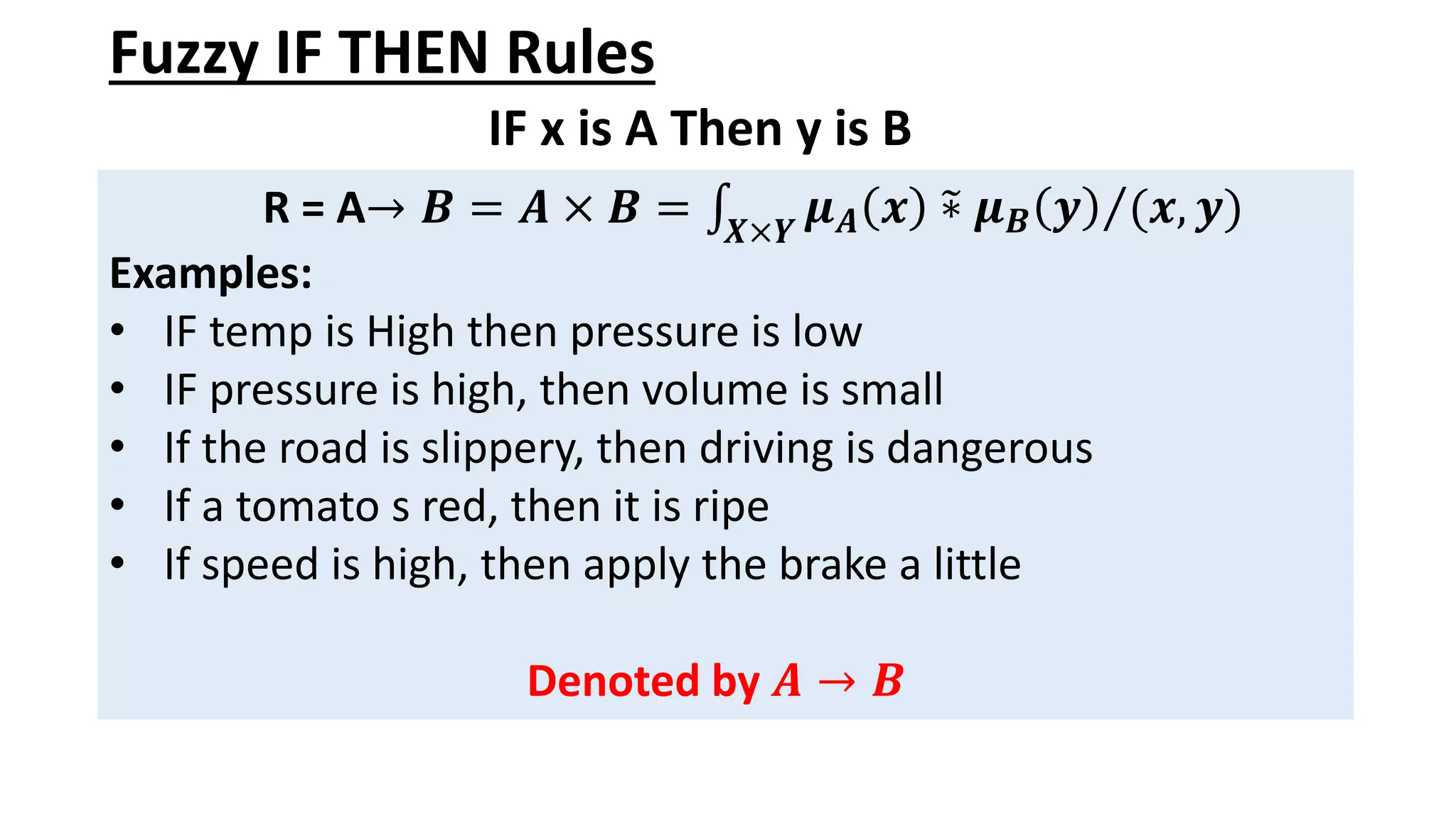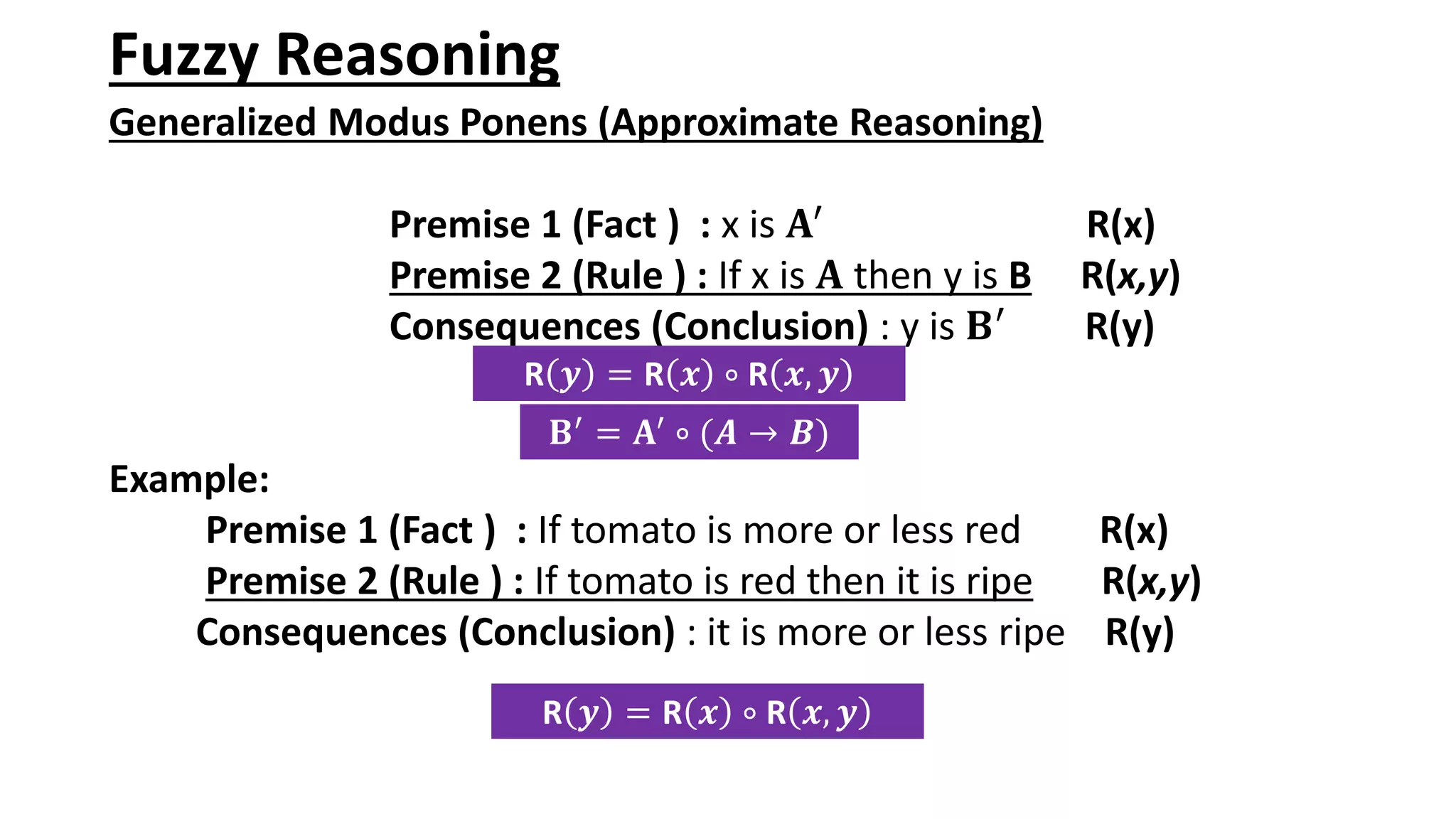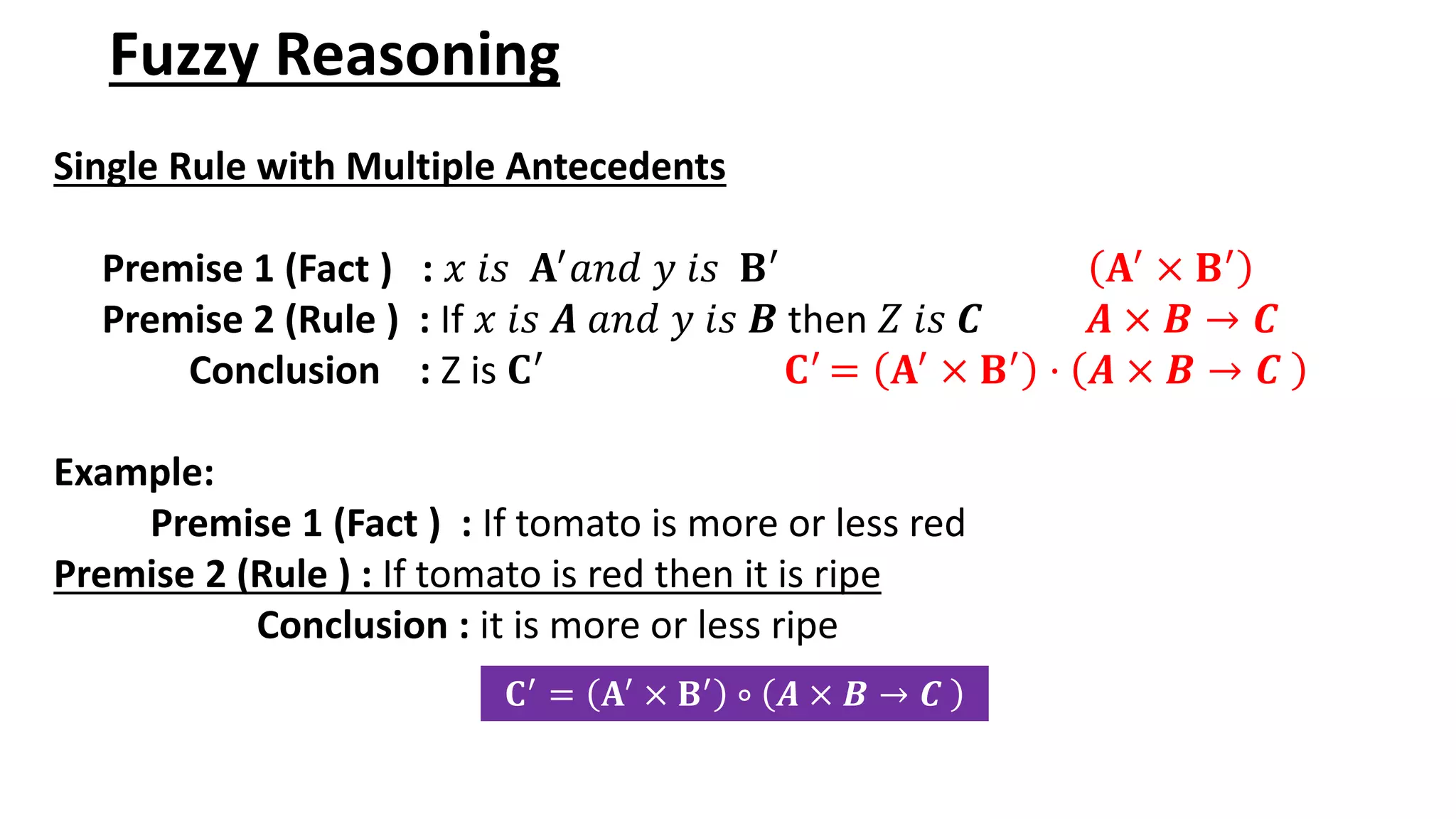This document discusses computational intelligence and fuzzy inference systems. It covers key concepts such as fuzzy inference systems, the extension principle, linguistic variables, fuzzy relations, and fuzzy reasoning. Fuzzy inference systems provide a framework for approximate reasoning based on fuzzy set theory and fuzzy IF-THEN rules. The extension principle extends functions to fuzzy domains. Linguistic variables allow variables to take linguistic values and terms. Fuzzy relations are used to represent relationships between variables. Fuzzy reasoning uses generalized modus ponens to draw approximate conclusions from fuzzy rules and facts.
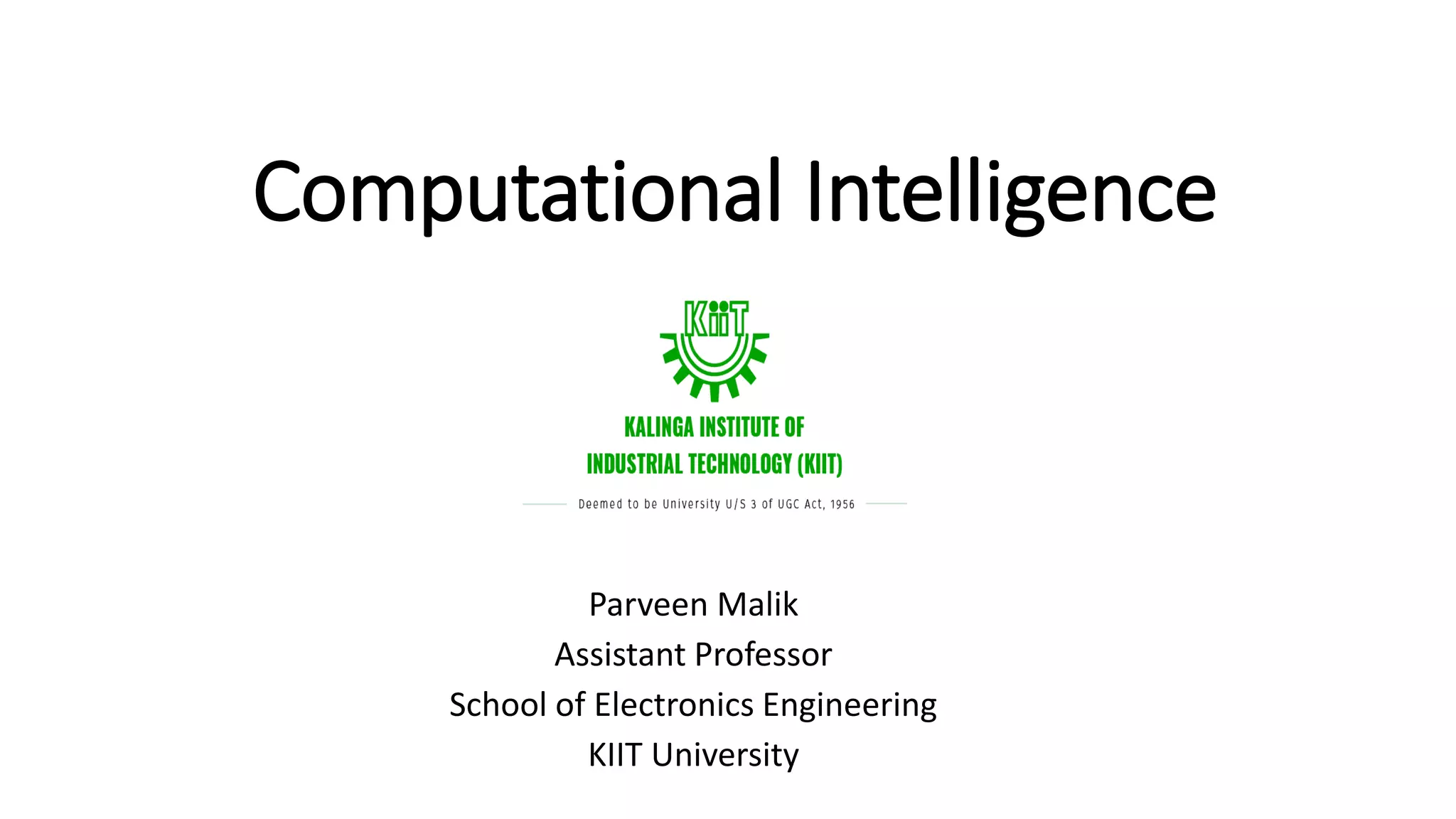
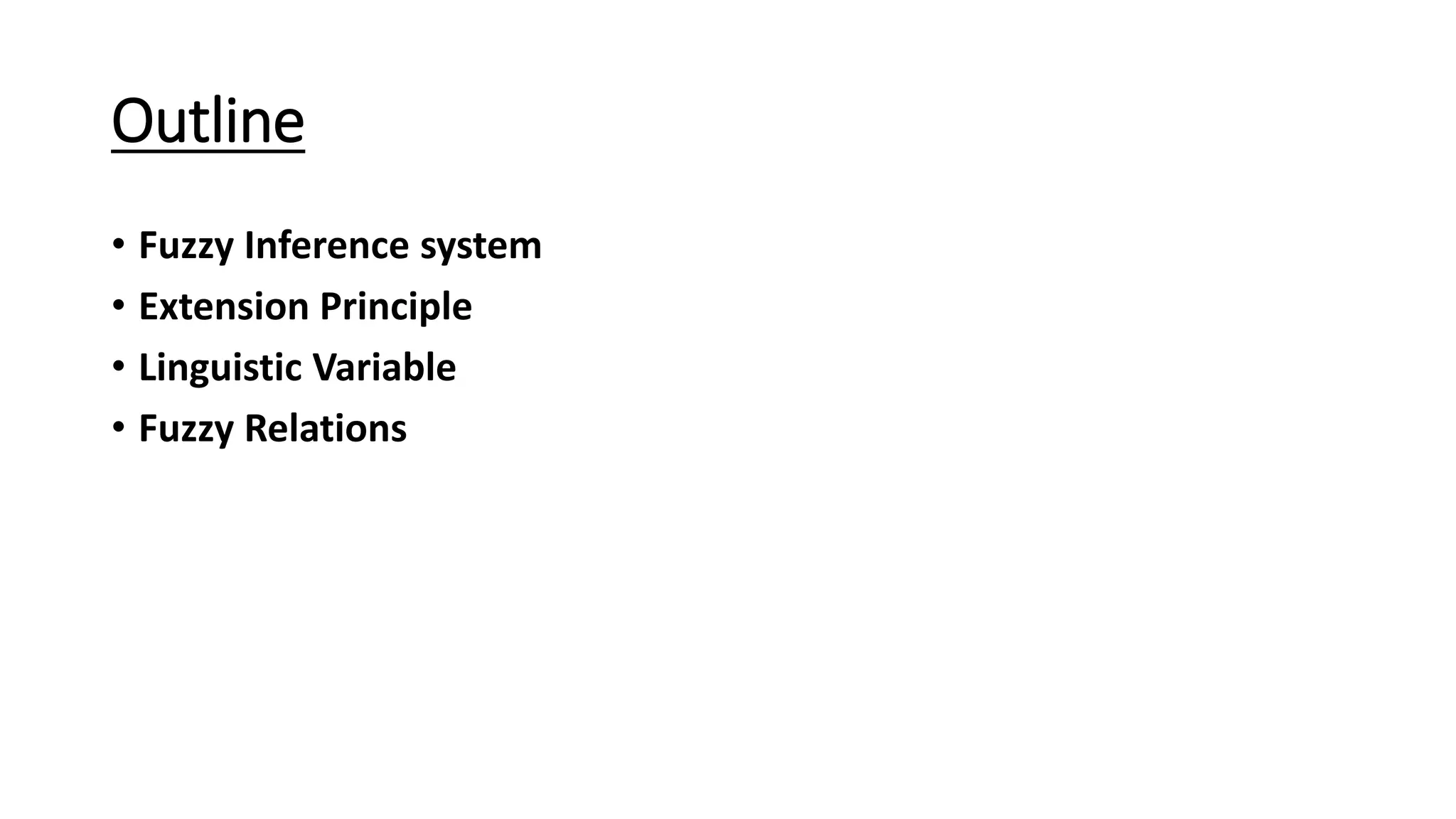

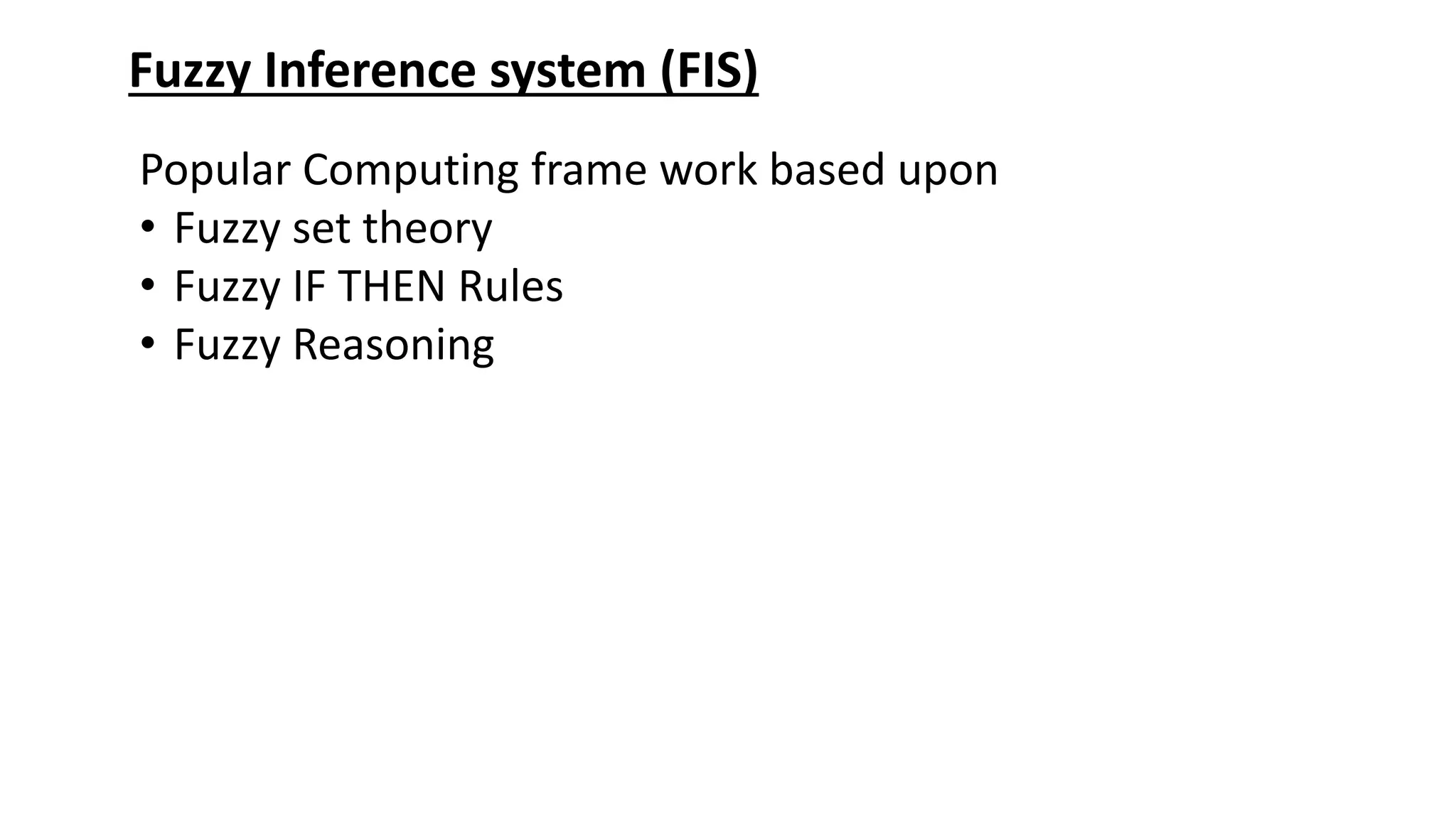
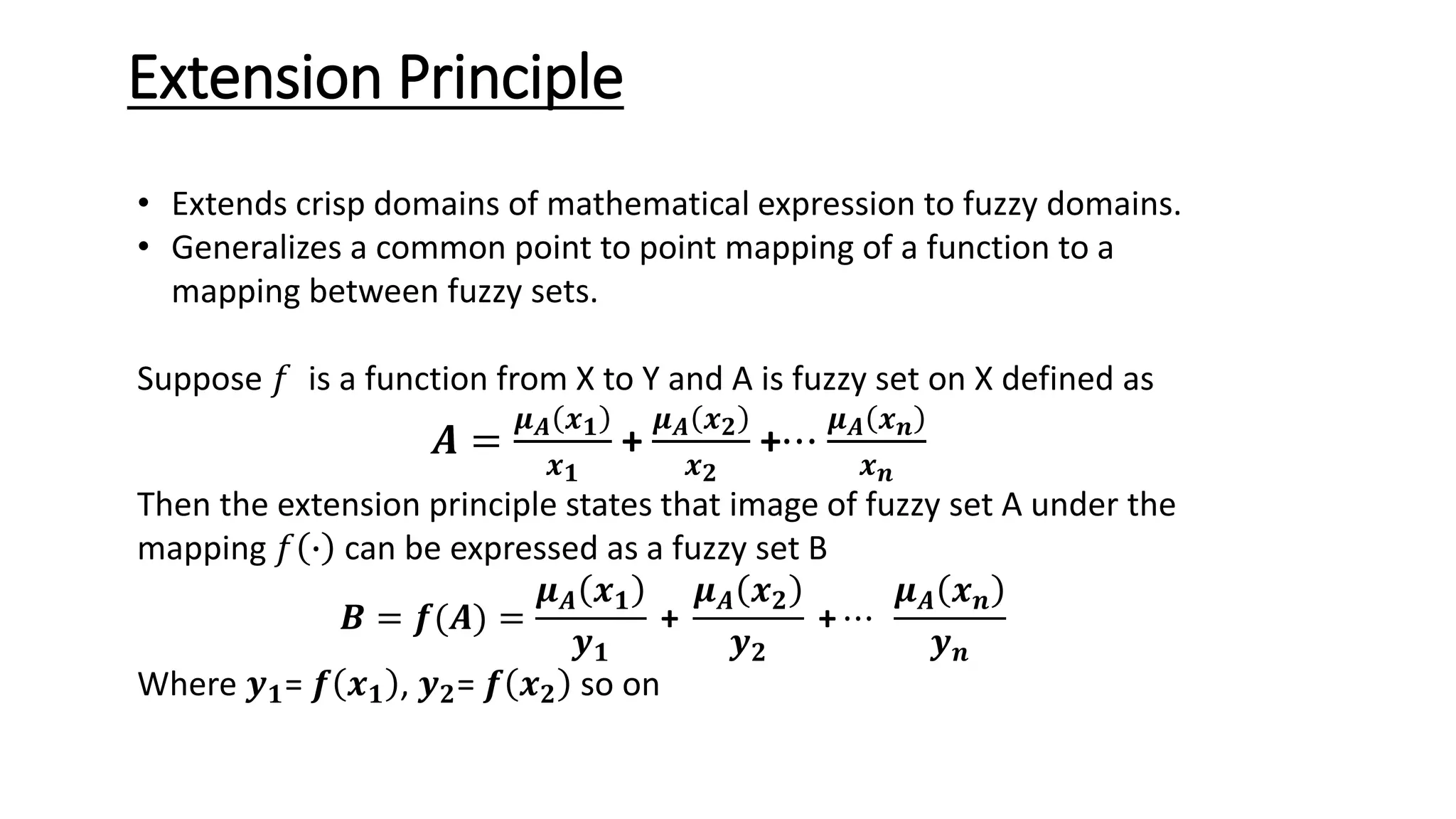

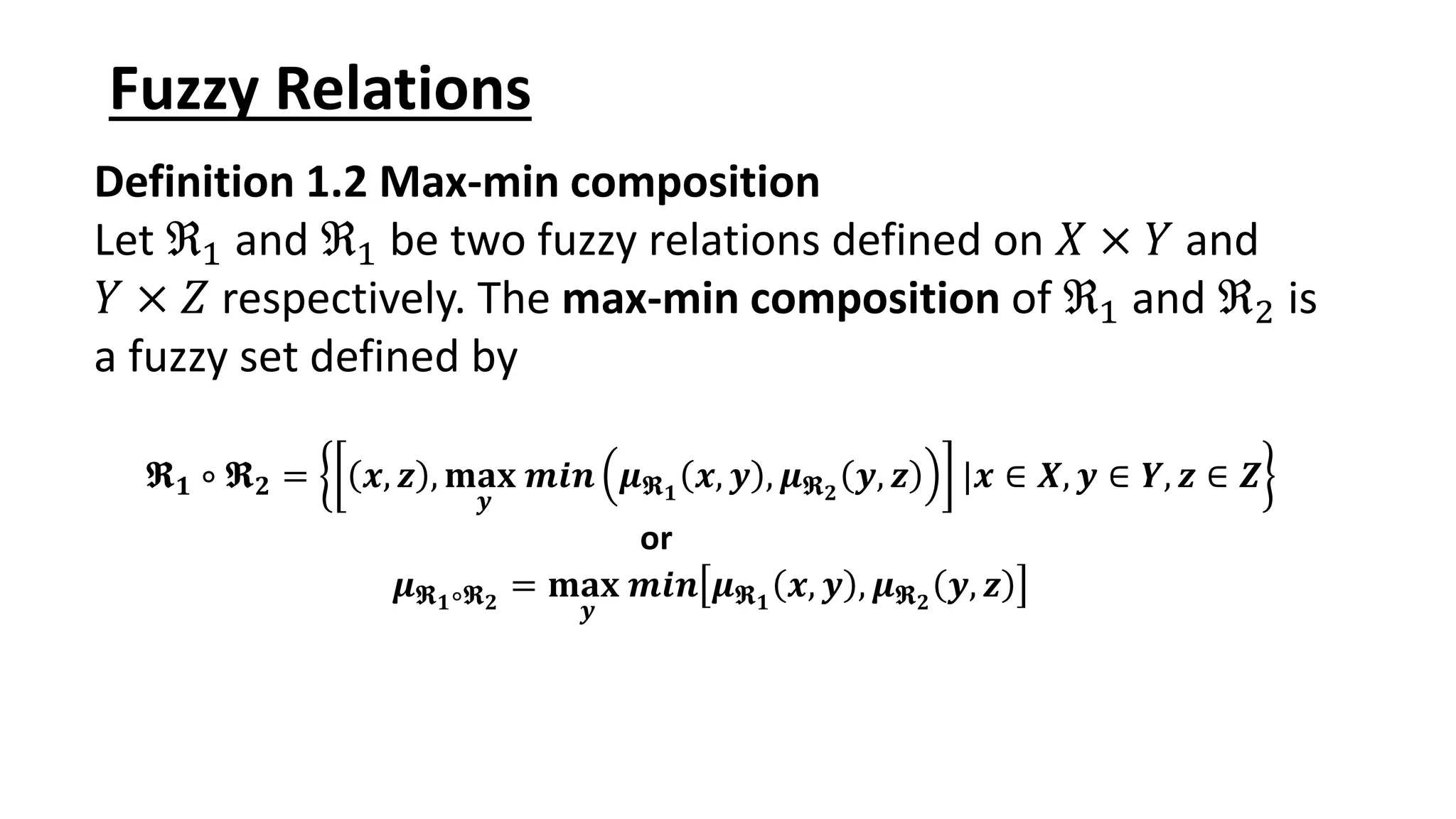
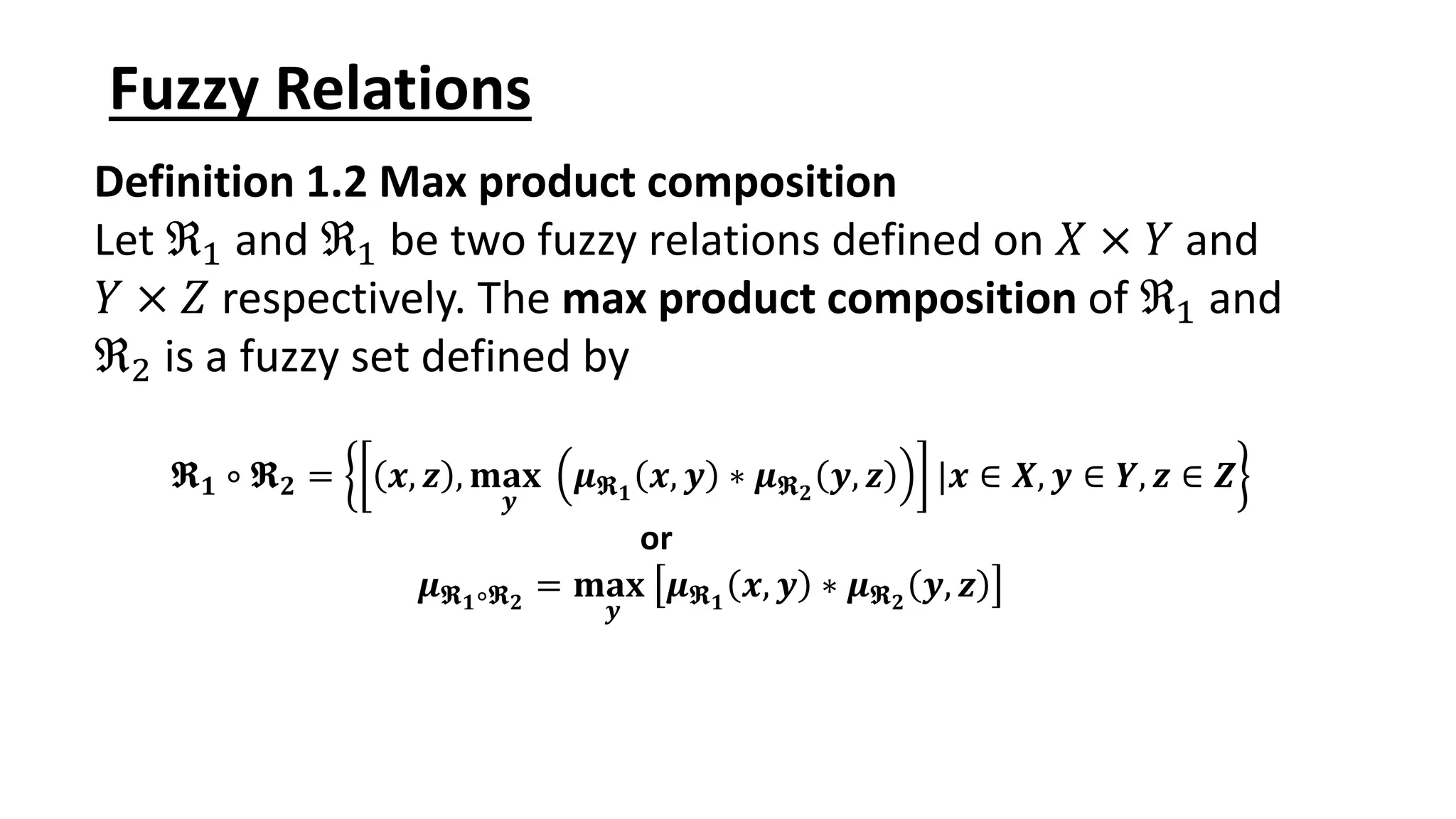
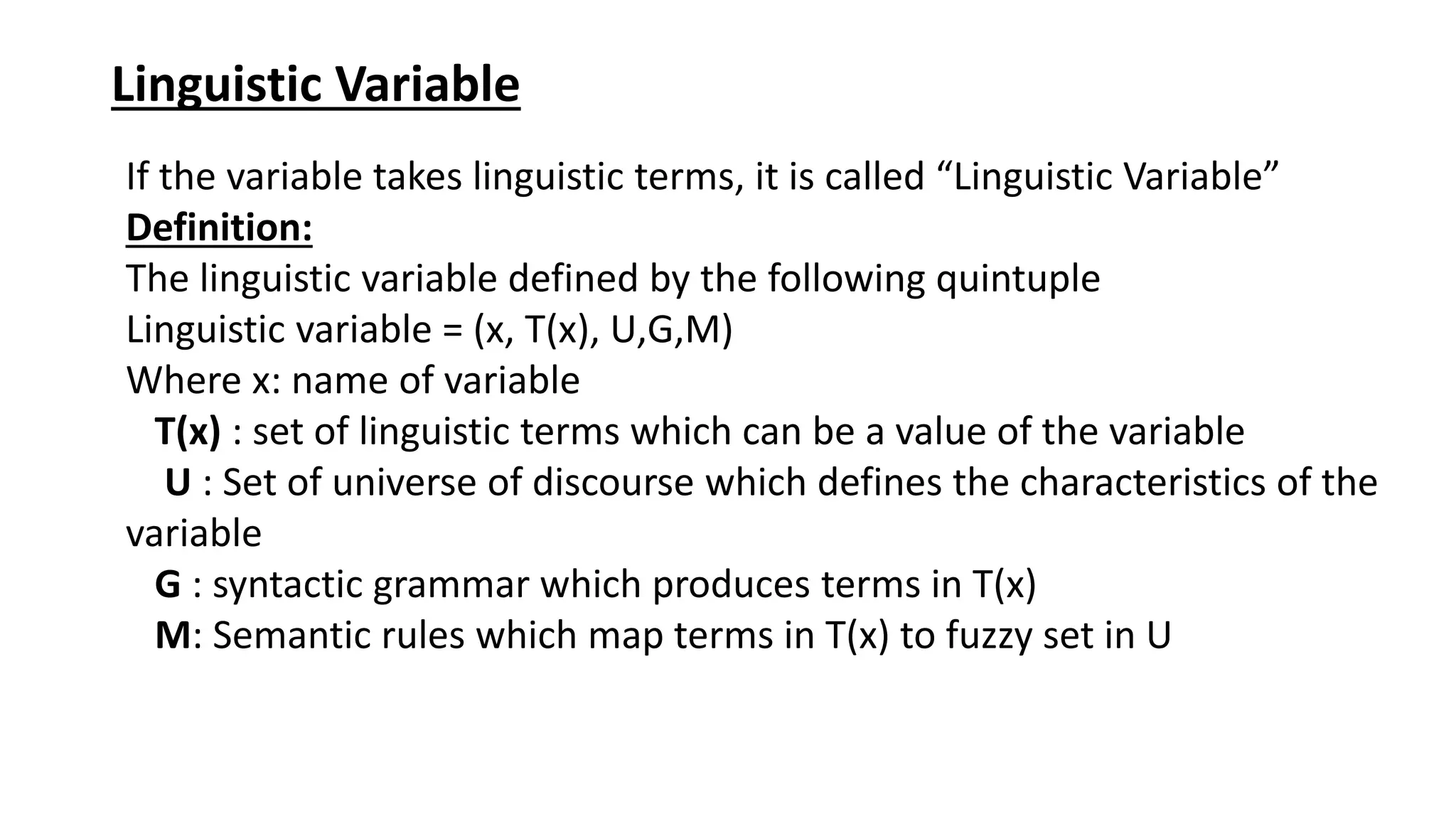
![Linguistic Variable Example: Let us consider a linguistic variable “X” whose name is “Age” X = (Age, T(Age), U,G,M) Where Age : name of variable X T(Age) : {young, very young, very very young,not very young…,} U : [ 0, 100] G(Age) : 𝑇𝑖+1 = {𝑦𝑜𝑢𝑛𝑔} ∪ 𝑣𝑒𝑟𝑦 𝑇𝑖 M(young): (𝑢, 𝜇𝑦𝑜𝑢𝑛𝑔(𝑢)|𝑢 ∈ [0,100] Where, 𝜇𝑦𝑜𝑢𝑛𝑔 𝑢 = ቐ 1 𝑖𝑓 𝑢 ∈ [0,25] 1 + 𝑢−25 5 −2 𝑖𝑓 𝑢 ∈ [25,100]](https://image.slidesharecdn.com/lecture2-fuzzyinferencesystem-220120135349/75/Lecture-2-fuzzy-inference-system-10-2048.jpg)
